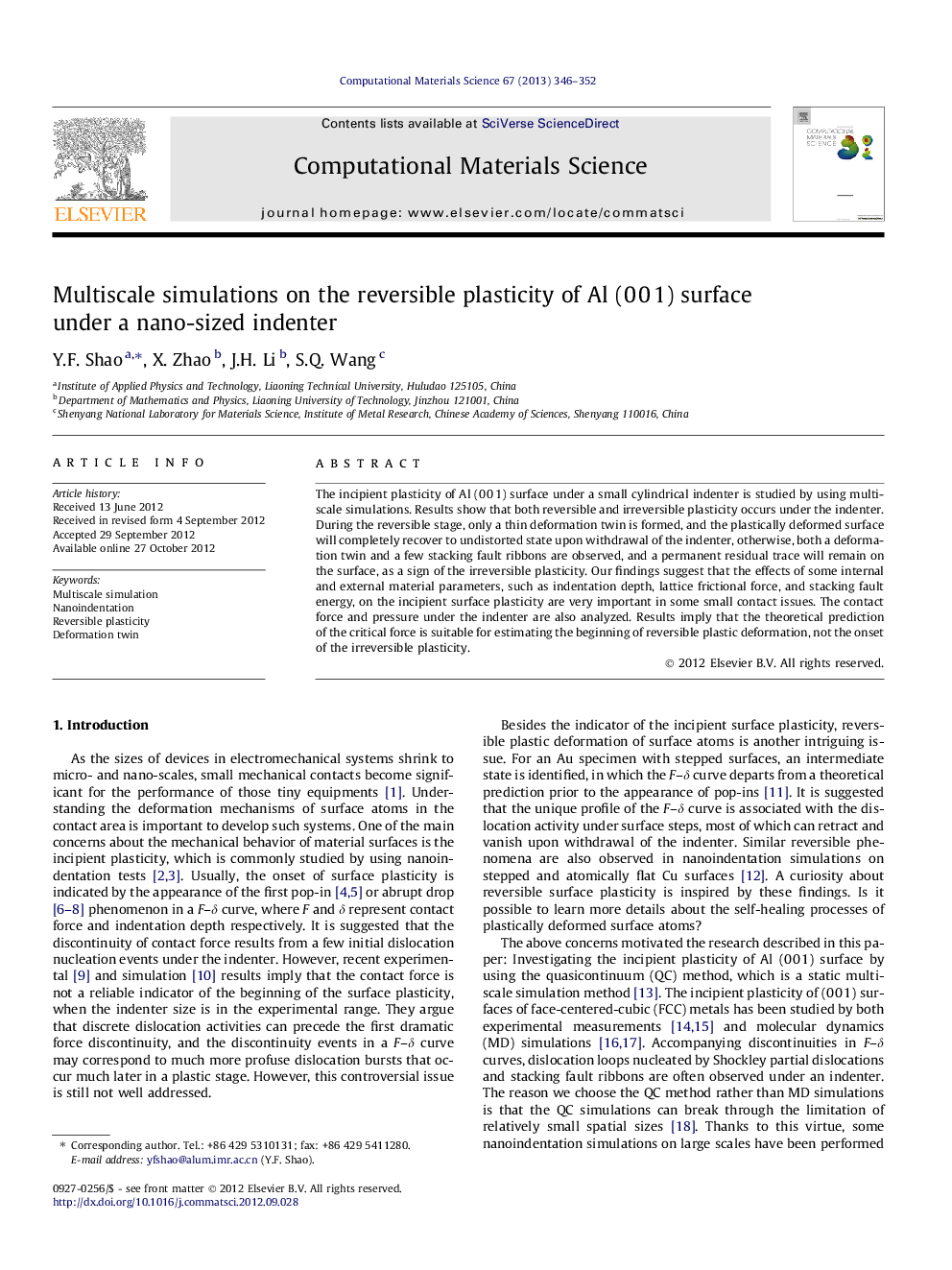| Article ID | Journal | Published Year | Pages | File Type |
|---|---|---|---|---|
| 1561300 | Computational Materials Science | 2013 | 7 Pages |
The incipient plasticity of Al (0 0 1) surface under a small cylindrical indenter is studied by using multiscale simulations. Results show that both reversible and irreversible plasticity occurs under the indenter. During the reversible stage, only a thin deformation twin is formed, and the plastically deformed surface will completely recover to undistorted state upon withdrawal of the indenter, otherwise, both a deformation twin and a few stacking fault ribbons are observed, and a permanent residual trace will remain on the surface, as a sign of the irreversible plasticity. Our findings suggest that the effects of some internal and external material parameters, such as indentation depth, lattice frictional force, and stacking fault energy, on the incipient surface plasticity are very important in some small contact issues. The contact force and pressure under the indenter are also analyzed. Results imply that the theoretical prediction of the critical force is suitable for estimating the beginning of reversible plastic deformation, not the onset of the irreversible plasticity.
► The nanoindentation processes on Al (0 0 1) surface are studies by using a multiscale method. ► Our results show that the both reversible and irreversible plasticity may occur under the surface. ► In the reversible plastic stage, the crystal exhibits a quasi-elastic behavior.
